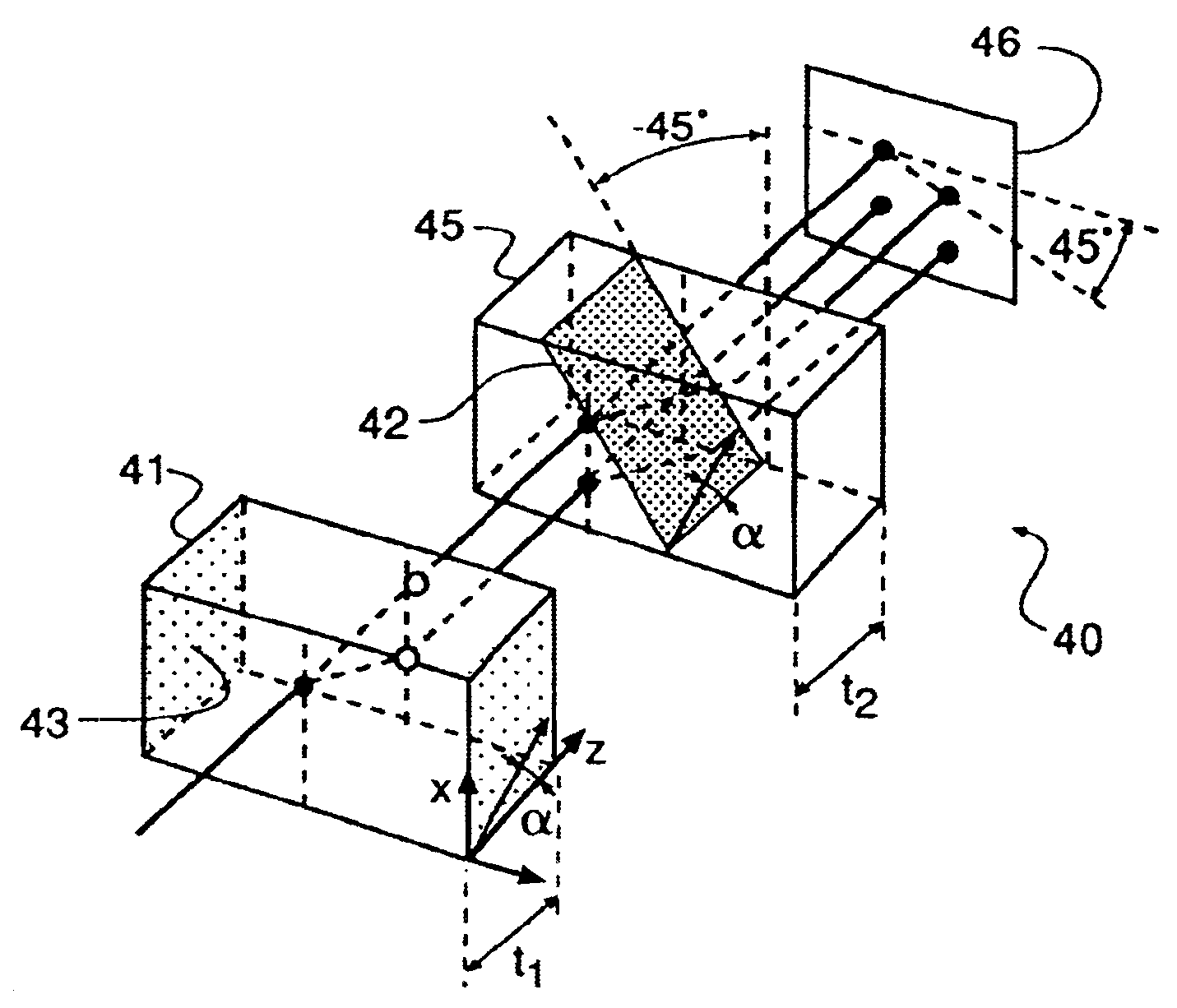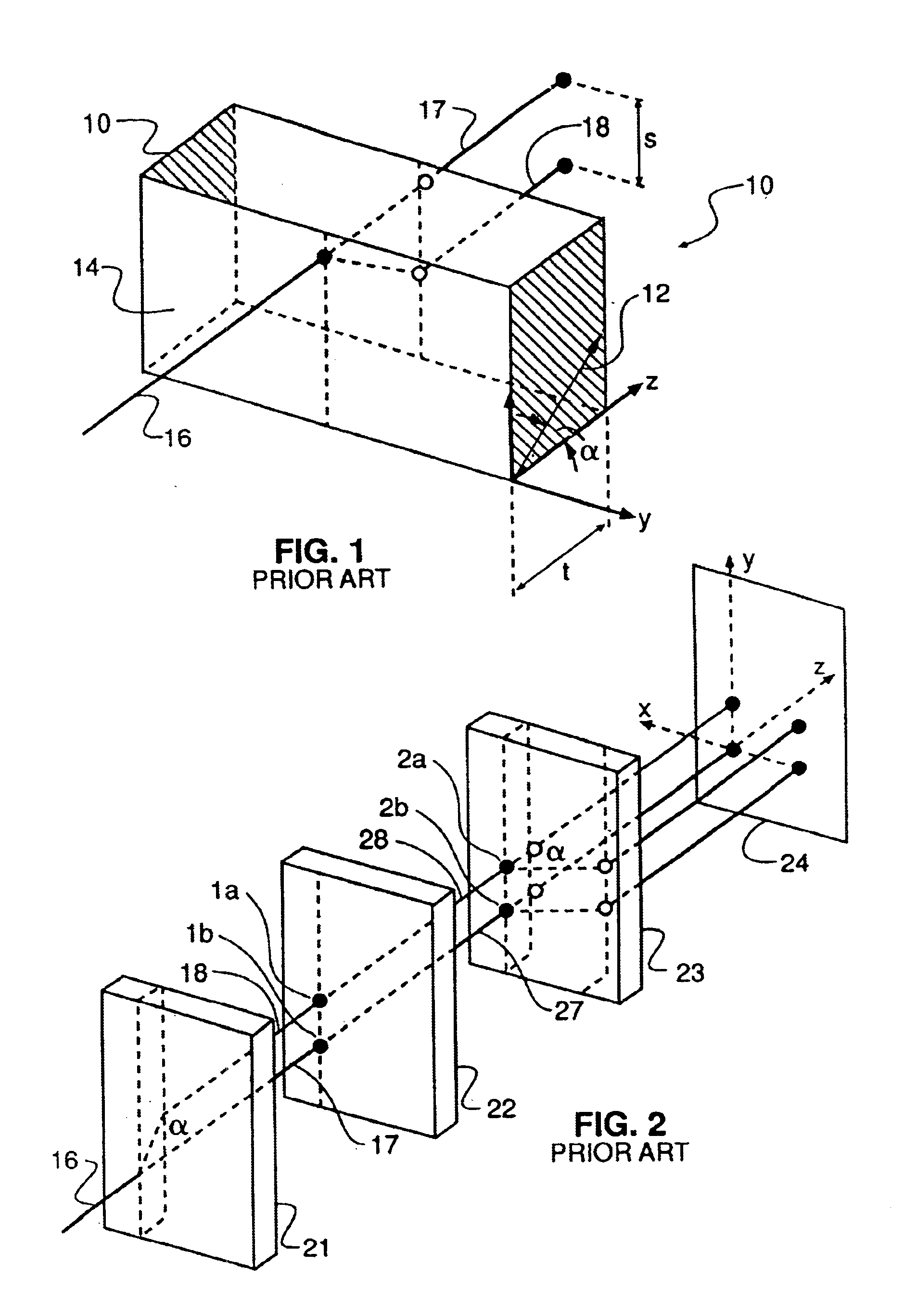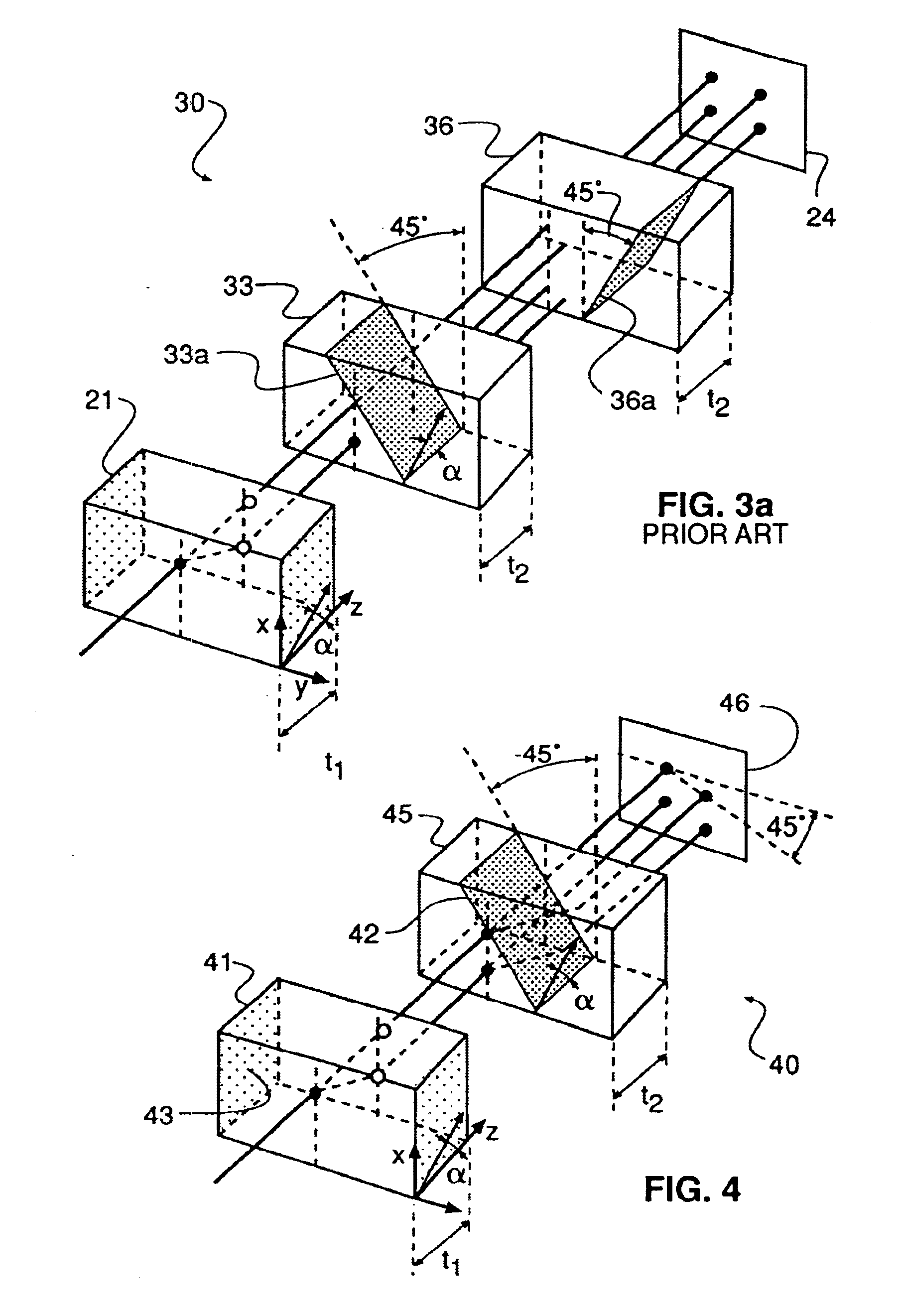Anti-aliasing low-pass blur filter for reducing artifacts in imaging apparatus
a low-pass blur filter and filter technology, applied in the field of low-pass optical filters, can solve the problems of aliasing or undersampling artifacts, spurious signals, and unfavorable image quality improvement, and achieve the effects of reducing the cost of filtering and cementing, and reducing the number of components
- Summary
- Abstract
- Description
- Claims
- Application Information
AI Technical Summary
Benefits of technology
Problems solved by technology
Method used
Image
Examples
Embodiment Construction
[0034]The present description is directed in particular to elements forming part of an apparatus in accordance with the present invention. It is to be understood that elements not specifically shown or described may take various forms well known to those skilled in the art. For instance, geometrical relationships of the optical components are not shown or described in detail, except where necessary to describe the invention. Moreover, relative sizings of components shown in the figures are not meant to be taken to scale, since the necessary geometrical relationships and sizings can be readily discerned by one of ordinary skill in this art.
[0035]Referring to FIG. 4, the preferred embodiment of a blur filter, referred to in general by numeral 40, according to the present invention is shown. A first double refractor 41 produces polarized light at each of the two spots. A second double refractor 45 has a plane 42, that is tilted at 45° to a first plane 43. The polarized light beam creat...
PUM
 Login to View More
Login to View More Abstract
Description
Claims
Application Information
 Login to View More
Login to View More - R&D
- Intellectual Property
- Life Sciences
- Materials
- Tech Scout
- Unparalleled Data Quality
- Higher Quality Content
- 60% Fewer Hallucinations
Browse by: Latest US Patents, China's latest patents, Technical Efficacy Thesaurus, Application Domain, Technology Topic, Popular Technical Reports.
© 2025 PatSnap. All rights reserved.Legal|Privacy policy|Modern Slavery Act Transparency Statement|Sitemap|About US| Contact US: help@patsnap.com



